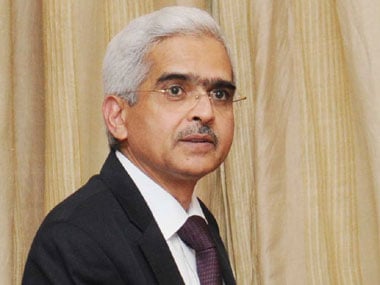Amid reports of inconvenience caused to cash strapped people, Prime Minister Narendra Modi on Sunday night chaired a high-level meeting to review the demonetisation policy. The detailed review meeting went past midnight and focused on improving public convenience. The review panel decided to extend the deadline to use old currency notes for essential commodities and key services until 24 November. It also took a battery of measures to facilitate last-mile distribution. [caption id=“attachment_2357754” align=“alignleft” width=“380”]  Economic Affairs Secretary Shaktikanta Das. Image: PIB[/caption] Shaktikanta Das, secretary, department of economic affairs, briefed the press on the out decisions taken. Here are the 10 key takeaways: 1) No need to panic. The government has enough cash. Steps are being taken to enhance supply. In the days to come, there will be enough cash available in every channel. 2) A special task-force will be formed under the Deputy Governor of Reserve Bank of India to monitor to expedite the recalibration of ATMs. All ATMs will be functional within the next few days. The task force will work closely with agencies involved in disbursement of cash. 3) The banks have been advised to hold separate queues for senior citizens and disabled people. So far, four instances have been reported where senior citizens had lost their lives while standing in long queues to withdraw cash. Queues for those customers who are visiting only to exchange old series of notes for new notes will also be separate. 4) A large number of micro ATMs will be deployed across the country to facilitate the disbursement of new currency. 5) To enhance supply of cash in rural areas where banking presence is less, the government will tap into the existing network of over 1.2 lakh active banking correspondents (BCs). The government has decided to increase their cash holding limit to Rs 50,000 and the banks will have flexibility to increase it further in case of special circumstances. The limit on transactions for the BCs, at present at one transaction per day, has also been lifted. They can now approach the branch they are attached to, multiple times to replenish their cash. 6) Over 1.3 lakh branch post offices will be authorised to disburse more cash in rural areas. 7) Limit of current accounts that are operational for at least three month has been increased to Rs 50,000 per day to help small businesses carry out paltry payments. 8) Nearly 18 crore transactions have been done by banking system in the last four days. 9) District cooperative banks will also receive cash to facilitate withdrawal. Govt departments PSU undertakings will be advised to undertake all their transactions in e-payment mode. That will also reduce pressure on banks and public. 10) The RBI has already advised banks to waive off transaction fees. There shall be separate queue for people visiting for transaction against account. Separate queue for notes exchange. The time limit to submit life certificate for pensioners has been extended up to 15 January.
The government has for the first time given a plan on how it would address the problems faced in unbanked rural areas
Advertisement
End of Article


)
)
)
)
)
)
)
)
)



